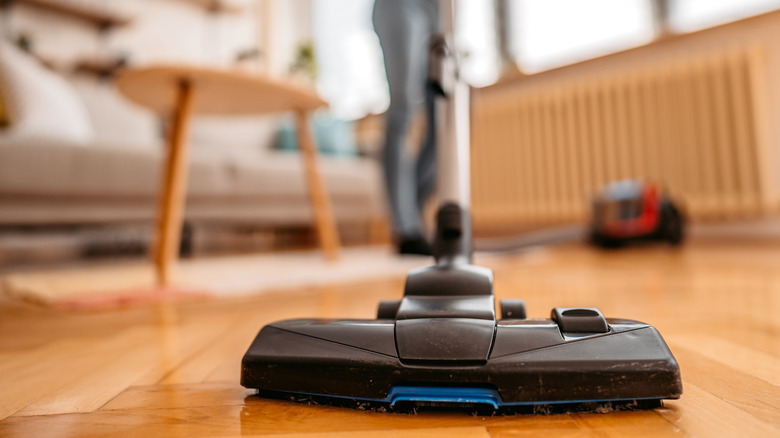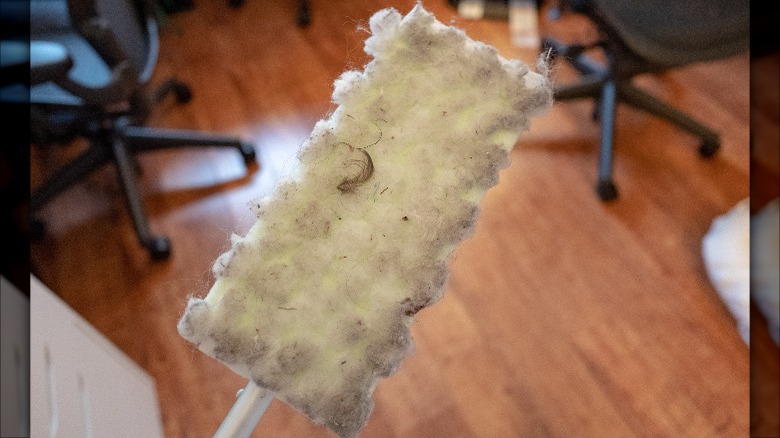Why You Should Vacuum Before Using Your Swiffer
According to a survey by YouGov, about 10% of adults say that sweeping or mopping the floor is their least favorite chore. It's time-consuming, strains your back, and often seems to kick up more dust than it cleans. With no cords, buckets, or filter bags, a Swiffer makes cleaning feel much simpler, but it could be a waste of time if used incorrectly. It may seem counterintuitive, but neglecting to vacuum your floors beforehand could be one of the biggest mistakes you're making with a Swiffer.
Think of cleaning your floors like sanding a table or filing your nails. In most cases, you'll want to start with the larger grit first, then work your way down to the finer grit. If you start with the finer grit too soon, it won't be as effective at smoothing out the surface. In other words, it's best to vacuum your floor first to remove the majority of the dirt, hair, and crumbs, then follow up with your Swiffer to pick up any lingering dust and allergens. While they might be convenient to use, Swiffers generally aren't the best tool for heavy-duty cleanup. Following this specific cleaning order will make your floor routine more effective and could save you time and money.
Swiffers are best for dust, not dirt
Spending a long time cleaning your floors is a pain, but what's worse is when you take that first barefoot step and find that your feet are still covered in pet hair and dust. To ensure that your floors are actually getting clean, give them a light vacuuming before passing over them with your Swiffer dry mop. Unlike a typical broom or dry mop, Swiffers depend on electrostatic cling to trap dust and keep it from redistributing around your home. A Swiffer is excellent for picking up tiny particles that your vacuum may miss, but it may not be strong enough to capture large debris and dust bunnies. What's more, the Swiffer pad will lose its effectiveness if it's clogged up with hair and dirt, so you can extend the life of each pad by vacuuming first.
The correct order of cleaning your floors is to vacuum, dry mop, then wet mop for best results. A cordless vacuum can be a great investment to make your cleaning day a breeze. Plus, their bristle-free design makes them safer for wood floors. If you really can't stand to clean your floors twice, consider a two-in-one tool like the Swiffer Sweeper + Vac. You could also try picking out the large debris or even lint on your Swiffer pads between uses to make them more effective.

